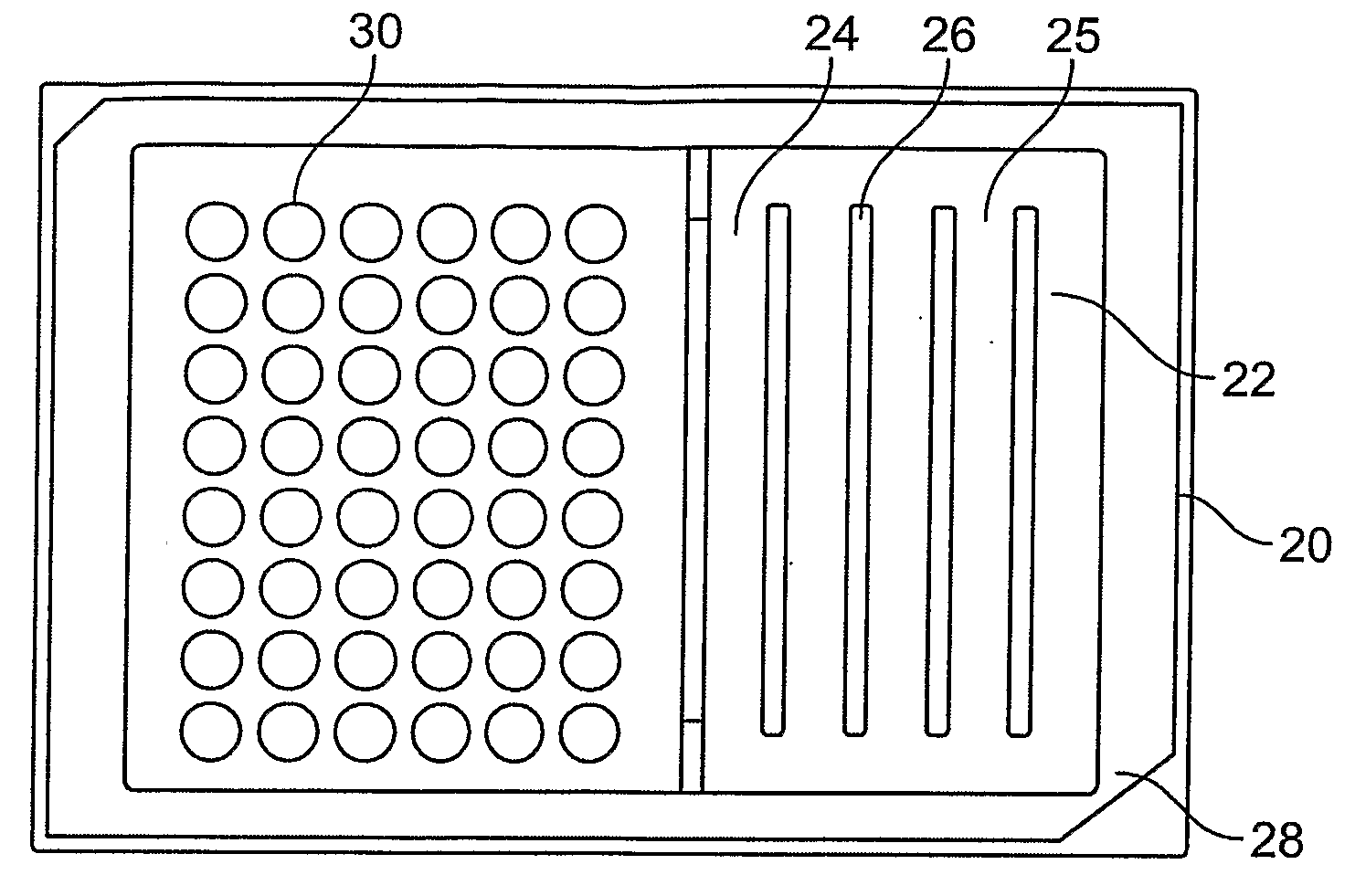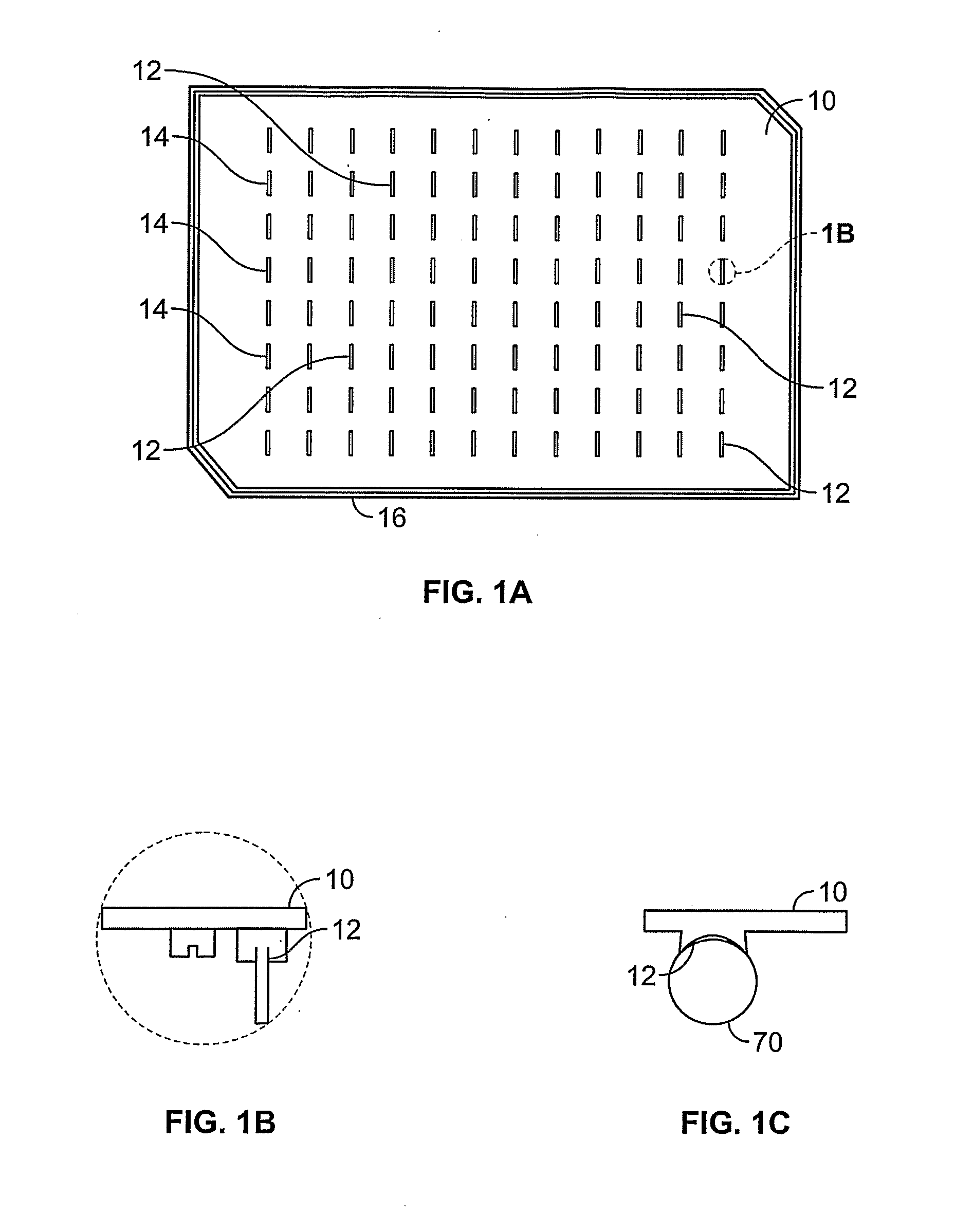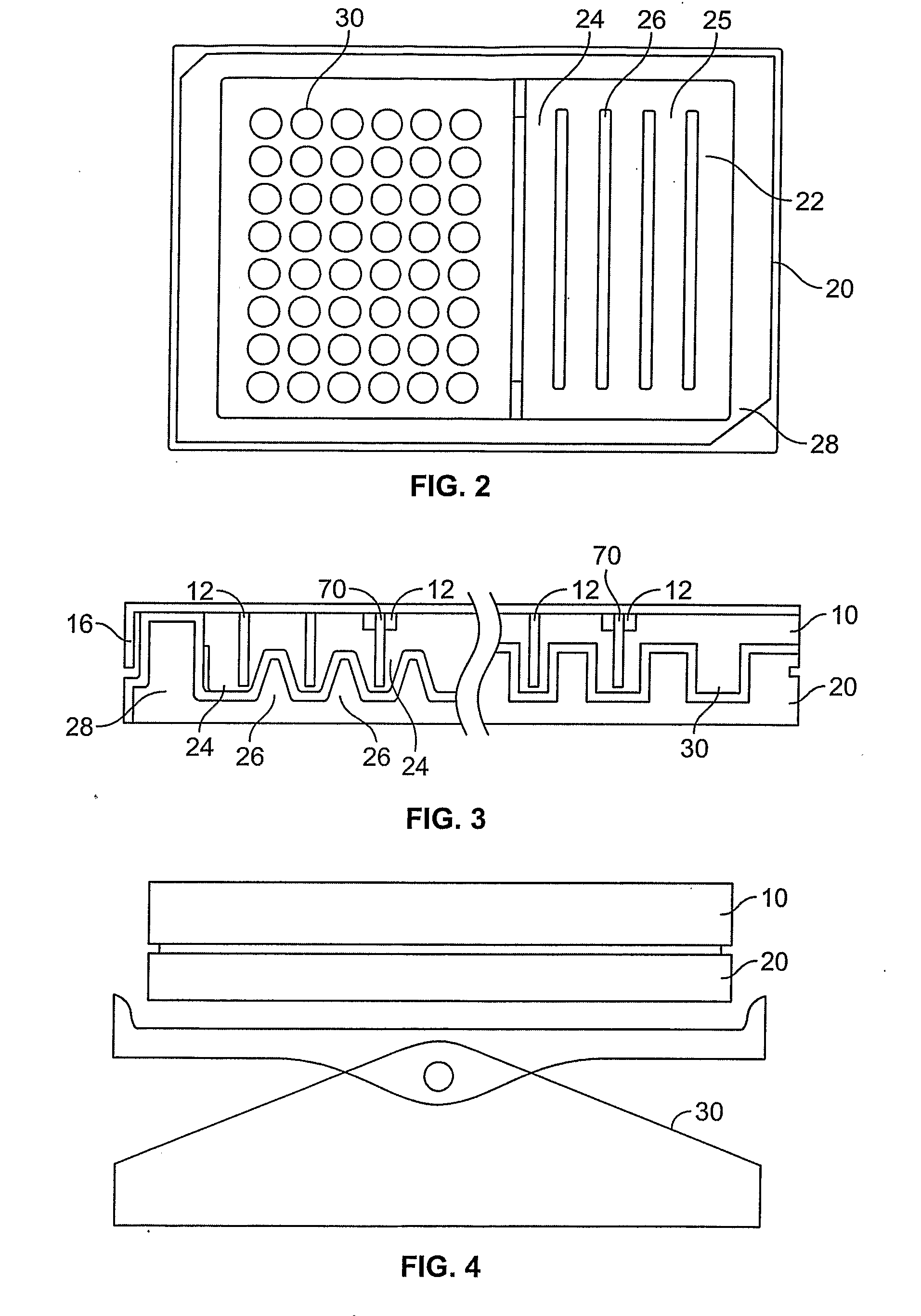Microbial Growth Assay
a microbial growth and assay technology, applied in the field of microbial biofilm analysis, can solve the problems that the consideration of a sessile microbial lifestyle has been neglected so far, and achieve the effects of convenient use, low cost and rapid growth
- Summary
- Abstract
- Description
- Claims
- Application Information
AI Technical Summary
Benefits of technology
Problems solved by technology
Method used
Image
Examples
examples
[0048]Biofilm Growth Conditions. Isolates were propagated in Mueller-Hinton broth (MHB). Flasks containing liquid medium (20 ml) were inoculated with a loopful of cells from MHB agar plates containing freshly grown isolates, and incubated overnight in an orbital shaker (100 rpm) at 37° C. Cells were harvested and resuspended in MHB at a cellular density equivalent to 1.0×106 cells per milliliter. Biofilms were formed on the pegs of the Calgary Biofilm Device (CBD; MBE™ Biofilm Technologies, Ltd., Edmonton AB), described in Ceri et al. (Ceri et al., J. Clin. Microbiol., 37(6):1771-6, 1999). The device consists of 96 conical pegs attached to a plastic lid. Biofilms were formed on the CBD by placing the device lid in a 96-well microtiter plate containing 200 μl of bacterial inoculum. The device was placed on a rocking platform at 37° C. and 95% humidity for selected time intervals (depending upon experiment), after which the lid was removed and briefly rinsed in phosphate buffered sali...
PUM
| Property | Measurement | Unit |
|---|---|---|
| humidity | aaaaa | aaaaa |
| concentrations | aaaaa | aaaaa |
| diameter | aaaaa | aaaaa |
Abstract
Description
Claims
Application Information
 Login to View More
Login to View More - R&D
- Intellectual Property
- Life Sciences
- Materials
- Tech Scout
- Unparalleled Data Quality
- Higher Quality Content
- 60% Fewer Hallucinations
Browse by: Latest US Patents, China's latest patents, Technical Efficacy Thesaurus, Application Domain, Technology Topic, Popular Technical Reports.
© 2025 PatSnap. All rights reserved.Legal|Privacy policy|Modern Slavery Act Transparency Statement|Sitemap|About US| Contact US: help@patsnap.com



